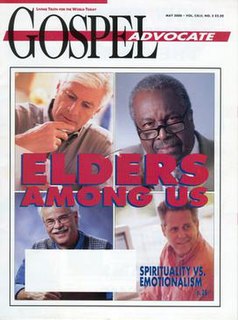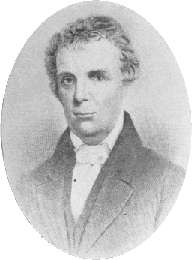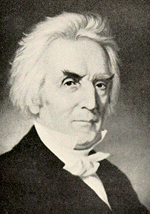History
During the period 1912 to 1913, the Word and Work began publishing articles written by Charles M. Neal supporting dispensational millennialism. [1] :783 In 1913 Watson sold the journal to Stanford Chambers, who became the sole editor. [1] :783 Watson, a postmillenialist, was disturbed by the increasing editorial emphasis on premillennialism, and later tried in two unsuccessful lawsuits to regain control of the journal. [1] :783
Dispensationalism is a religious interpretive system and metanarrative for the Bible. It considers biblical history as divided by God into dispensations, defined periods or ages to which God has allotted distinctive administrative principles. According to dispensationalism, each age of God's plan is thus administered in a certain way, and humanity is held responsible as a steward during that time. Dispensationalists' presuppositions start with the inductive reasoning that biblical history has a particular discontinuity in the way God reacts to humanity in the unfolding of their, sometimes supposed, free wills.
Millennialism, or chiliasm, is a belief advanced by some religious denominations that a Golden Age or Paradise will occur on Earth prior to the final judgment and future eternal state of the "World to Come".
Chambers sold Word and Work to Robert Henry Boll in 1916. [1] :783 Boll had been a controversial front page editor of the Gospel Advocate , writing articles on biblical prophecy during his tenure beginning in 1909; he was forced to resign in 1915 as the result of a developing controversy over his millennial views and the importance he placed on biblical prophecy in the study of the Bible. [3] :96 His eschatological focus came into conflict with the church-centered views of other Church of Christ leaders of the time. [2] :306 [3] :97 The reaction to Boll's premillennialism helped to define and solidify the amillennial view among the mainstream of the Churches of Christ. [2] :306 [3] :97 Under Boll's leadership the Word and Work became the journalistic voice for premillennial Churches of Christ. [1] :783 Boll also used the journal to promote foreign mission work. [1] :783
Robert Henry Boll was a German-born American preacher in the Churches of Christ. Boll is most known for advancing a premillennialist eschatology within the Churches of Christ, in articles written during his editorship of the front page of the Gospel Advocate from 1909 to 1915 and after 1915 in Word and Work, leading to a dispute which was a significant source of division within the Churches of Christ in the 1930s. Boll was one of the most influential advocates for the premillennial point of view, and was most singularly opposed by Foy E. Wallace Jr. By the end of the 20th century, however, the divisions caused by the debate over premillennialism were diminishing, and in the 2000 edition of the directory Churches of Christ in the United States, published by Mac Lynn, congregations holding premillennial views were no longer listed separately.

The Gospel Advocate is a religious magazine published monthly in Nashville, Tennessee for members of the Churches of Christ. The Advocate has enjoyed uninterrupted publication since 1866.

Bible prophecy or biblical prophecy comprises the passages of the Bible that supposedly reflect communications from God to humans through prophets. Jews, Christians and Muslims usually consider the biblical prophets to have received revelations from God.
E. L. Jorgenson and J. R. Clark succeeded Boll as editors when he died in 1956. [1] :783 They were followed by Gordon R. Linscott in 1962, William Robert Heid in 1976 and Alex Wilson in 1986. [1] :783






